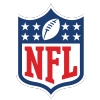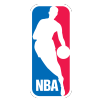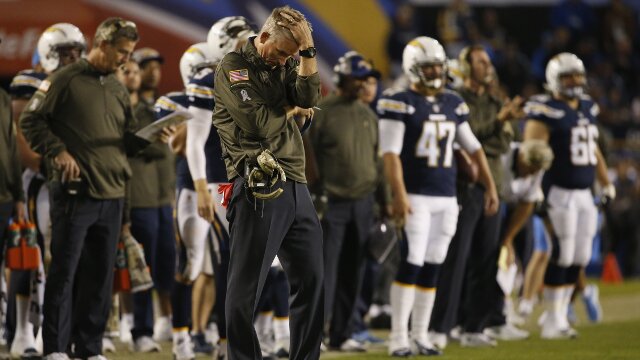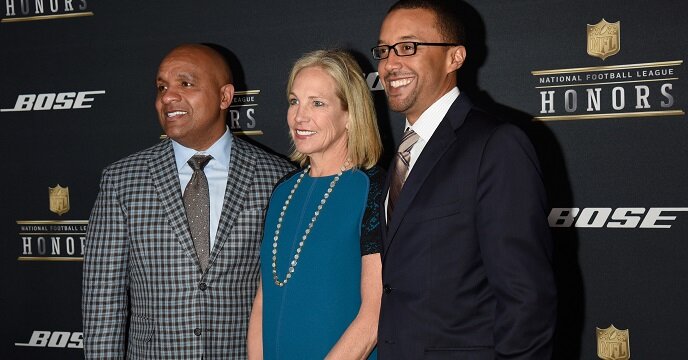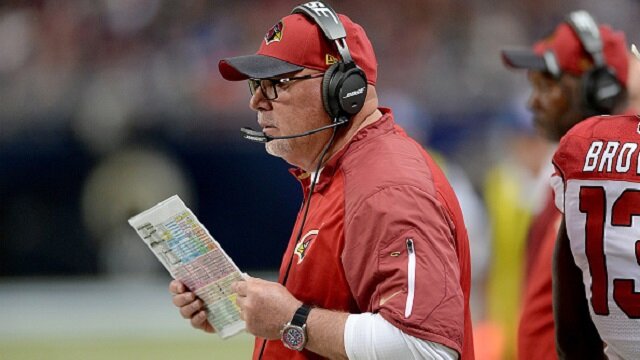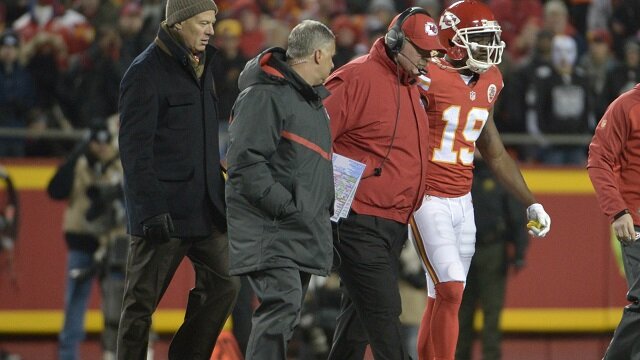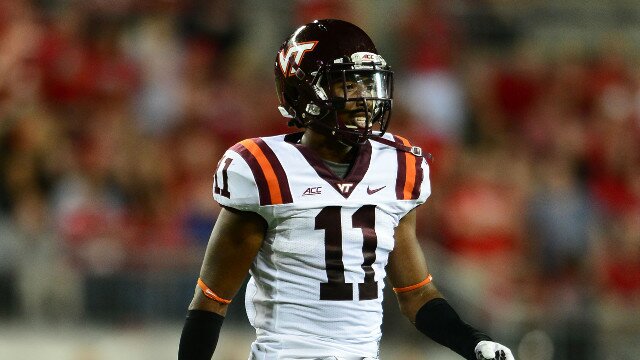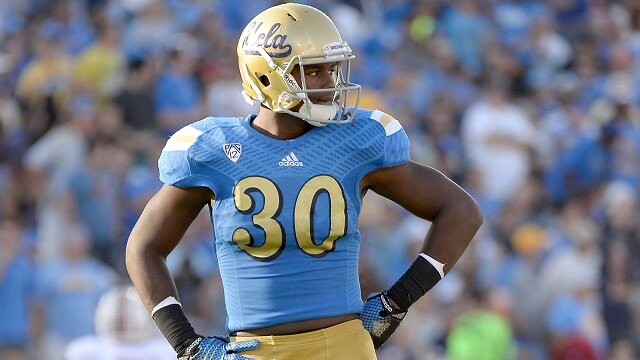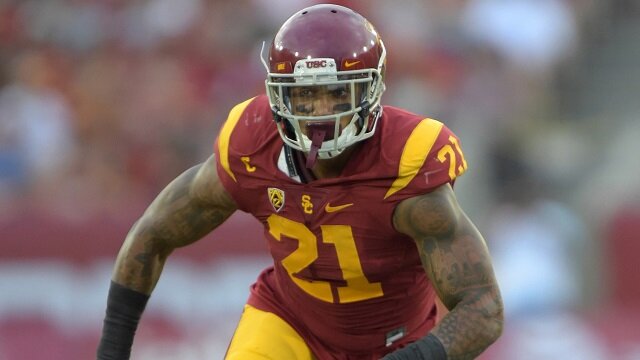

Last year we saw a rare occurrence, we had two tailbacks selected in the first round of the NFL Draft for the first time since 2012. With the recent success of Todd Gurley, whose star shined brightly for the St. Louis Rams last season, a few teams are now more open to the idea of taking a back in the first round.
Will a running back be taken in the 1st round?
Below are the rankings of the running backs in the 2016 NFL Draft class. This class offers a wide variety of different style of runners and players who can fit into multiple schemes and offenses in the NFL.
1) Ezekiel Elliott (RB, Ohio State):
At 6’0” and 225 pounds, Elliott is a rare combination of speed and agility matched with a size that allows him to absorb tacklers and bounce right off of them. Last season he rushed for 1,821 yards, an average of 6.3 YPC, and 23 rushing touchdowns.
For his career in 35 games, Elliott had 592 rushing attempts, 3,961 yards, 6.7 YPC, 43 TD, and 181 first downs. With 27 runs of 20 yards or more, Elliott had a big play rate of 4.6 percent.
A remarkably consistent tailback, Elliott averaged 6.4 YPC in the first half of games played, and 7.0 YPC in the second half of games. He had a .6 YPC variance between the two halves for his career.
With close to 600 carries, Elliott only had four career fumbles, giving him a fumble rate of .6 percent of his carries or once every 162.5 touches. He has repeatedly shown to have an iron grip on the football when it is in his grasp.
With a running back rating of 88.3, Elliott has a similar rating to last year’s top rated running back Todd Gurley. While he might not be a top-15 pick like Gurley, Elliott will most likely be the first tailback selected in the draft.
2) Derrick Henry (RB, Alabama):

Derrick Henry is a big, bruising tailback capable of running over opposing tacklers and was the foundation of the Nick Saban led Alabama Crimson Tide team. Leading the way for Alabama, Henry is a 6’3” 247 pound beast who won’t go down on initial contact. This past season was his first time as an every game starter and opponents quickly had second thoughts when trying to take him down to the ground.
In 38 career games, Henry had 602 carries, 3,591 yards, 6.0 YPC, 42 touchdowns, and 173 first downs. He had 32 runs of 20 or more yards, a big play rate of 5.32 percent of his carries.
For his career, Henry has averaged 5.6 YPC in the first half of games. In the second half, he averaged 6.3 YPC, a .7 YPC increase between the two halves.
Several coaches that I spoke with said they worry about Henry’s size and his ability to keep the weight off. He might be able to maintain his physical stature at 22 years old, but as we’ve seen with his former teammate, Eddie Lacy, those pounds can pack on rather quickly.
There is no question that Henry is the second best running back in this class and there is a big drop between Henry and the next group of tailbacks. With a running rating of 99.7, Henry has the third highest score amongst all the tailbacks in this draft class.
3) Kenneth Dixon (RB, Louisiana Tech):

A smaller back at 5’10” and 215 pounds, Dixon is an elusive runner who has excellent balance and will bounce off would-be tacklers. An escape artist in the open field, tacklers have a hard time just getting a good shot on him since he runs so low to the ground.
In 47 career games he has attained 801 carries, 4,480 rushing yards, 5.6 YPC, 72 touchdowns, and 204 first downs. Dixon has the second highest big play rate amongst tailbacks in this draft class, he had 50 runs of 20 yards or more, 6.2 percent of his rush attempts.
Dixon would rather run through a tackle and won’t waste a lot of time to juke out a linebacker or a safety. He will run straight and, hopefully, over a tackler. In 2015 against Rice, Dixon finished the game with 43 yards after contact and nine broken tackles.
The one major red flag is Dixon’s ball security issues; he had a total of 14 career fumbles, giving him a fumble rate of 1.6 percent of the time or once every 63.5 touches.
The agility and quick strike nature of Dixon’s game make him a possible third or fourth round prospect. He finished with a running back rating of 83.51, fifth highest in this year’s draft class.
4) Travis Greene (Bowling Green):

An exciting player who is capable of causing havoc against opposing defenses, Travis Greene has to be one of the least talked about running backs in this draft class. Defenders have a hard time even getting a hand on him as he is shifty in space and can slip through tacklers.
In 41 career games, Greene had 683 carries, 3,852 yards, 5.6 YPC, 38 touchdowns, and 188 first downs. Greene had the third highest big play rate, with 5.9 percent of runs resulting in 20 or more rushing yards.
With over 600 carries, Greene rarely put the ball on the ground; he had only three fumbles for his career. Greene had a .4 percent fumble rate, meaning he fumbled once every 252 touches, the best rate of any running back in this draft class.
At 5’10” and 182 pounds, Greene is slender and will need to pack on the pounds if he going to be called upon to pass protect. Scouting wise he compares to current Denver Broncos tailback, Ronnie Hillman. Greene had a running back rating of 73.2
5) Jordan Howard (RB, Indiana):

After UAB cut its football program, Howard, who was the star for the Blazers, transferred to Indiana. The Hoosiers were in desperate need of a running back after losing 2014 star, Tevin Coleman, to the NFL. Howard stepped right into the starting role and never looked back.
At 6’0” and 230 pounds, Howard is a bruising, physical and punishing runner who won’t go down on first contact. In 32 career games, he had a 647 carries, 3,681, 5.7 YPC, 24 touchdowns and 190 first downs.
Defenders had a hard time getting Howard to the ground and he was able to break through arm tackles with ease. According to Pro Football Focus, Howard averaged 3.3 yards after contact over the past couple of seasons. On third and short situations, Howard had a first down conversion rate of 69.4 percent, sixth highest amongst running backs in this draft class.
With a running back rating score of 71.1, statistically and scouting wise he compares favorably to current Cincinnati Bengals running back, Jeremy Hill.
6) Jonathan William (RB, Arkansas):

A foot injury sustained in August of last year caused Williams to miss the entire 2015 season. Coming off a 2014 campaign which saw Williams ranked fourth in rushing in the SEC, hopes were high going into last season for Arkansas making a run at the national title. Despite seeing limited action in his first couple of seasons, and having only over 200 carries just once in a single season for his career, Williams elected to go pro and enter the 2016 NFL Draft.
A consistent runner in terms of his performance between the first and second halves of games, Williams averaged 5.9 YPC in the first half of games for his career compared to 5.6 YPC in the second half. A drop of just .3 YPC difference shows he doesn’t wear down easily and is able to maintain a high level of production throughout the course a game.
In addition to his health concerns, the biggest issue that NFL teams will have with Williams is his ball security problems. Williams had a total of ten fumbles, a rate of 2.3 percent of touches, or once every 43 touches resulted in a fumble, sixth highest rate amongst tailbacks in this draft class.
Health concerns and issues over his ability to hold onto the football are two major red flags that have caused Williams to drop to the later rounds on a few NFL team’s draft boards. With a running back score of 68.2, Williams has proved to be a quality, productive back who dominated against some of the nation’s toughest defenses.
7) Paul Perkins (RB, UCLA):

As the Pac-12 leader in rushing yards in 2014 (1,575 yards), Perkins continued his level of dominance in 2015, rushing for 1,343 yards, fourth best in the Pac-12. This past season he was tasked with mentoring a freshman quarterback and being the unquestioned leader on offense. He bore a lot of the responsibility of being a vocal captain and a strong example for a young Bruins team.
Sliding past defenders and using an impressive jump cut to spring himself loose, he had a big play rate of 3.7 percent of his carries amassing 20 or more yards.
Though he isn’t the biggest back in the class, he showed an impressive ability to pick up critical yards in short yardage situations. For his career on third and short (three yards or less), Perkins was able to pick up the first down 62.8 percent of the time.
With a running back rating of 67.2, Perkins is someone who showed remarkable consistency and production throughout his career. He is suited for a zone style blocking scheme to take advantage of his slashing running style.
8) C.J. Prosise (RB, Notre Dame):

A few players have the natural ability and talent to play new positions with very little practice time and make it look as though they have played it their whole career. Prosise was a former safety and wide receiver and due to a lack of experience at the tailback position during spring practice last season, Prosise moved inside and quickly became a starter.
In just 17 games as an offensive player, Prosise had a total of 166 carries for 1,155 yards, a 7.0 YPC average, 12 touchdowns, and 52 first downs. He had a total of four runs of twenty yards or more, a big play rate of 2.4 percent of his carries.
Prosise is perfectly suited to play in a zone running scheme to take advantage of his quickness and ability to make a cut and quickly get up field. He shows great patience for a back who lacks in experience.
A red flag on Prosise’s resume is his ball security issues, he had a total of five fumbles for his career, a rate of one fumble every 40.4 times he touches the football.
Prosise scored a running back rating of 67.0. He has some room to grow and develop as a player, along with adding a few carries to his resume. He didn’t return kicks in college which he will need to learn how to do once he reaches the NFL. Prosise might not develop into a full time starter, but he can be a great change of pace back-style tailback.
9) Aaron Green (RB, TCU):

Despite not getting an invite to the NFL Combine, Aaron Green has shown scouts that he was a dynamic part of the high powered TCU offense and has the skill set to be on an NFL roster. Measuring in a 5’10” and 203 pounds, Green isn’t the biggest back in the world but he excels at getting out in space and using his speed to blow past defenders.
A big play threat, 4.3 percent of his carries resulted in 20 yards or more and he is tied for ninth best amongst draft eligible running backs in this class.
He gave defenses a lot of problems in the second half of games, utilizing his speed and quickness against the tired legs of a defense. With a 4.8 YPC average in the first half and 5.8 YPC in the second half of games, Green averaged a positive 1.0 YPC more in the second half of games during his career.
Green has shown that he can move up into the slot position and has showcased a solid set of hands, grasping the ball cleanly and away from his body. He had a total of 40 receptions for 332 yard, an 8.3 YPC average, and five touchdowns.
With a running back rating score of 69.0, Green could be used in a similar fashion to current Patriots running back, James White. Look for Green to be a mid to late round selection and someone who should be a factor on special teams early in his career.
10) Devon Johnson (RB, Marshall):

At Marshall, Johnson started out as a linebacker then switched to become a tight end. After a season as tight end, which saw him average 18 yards-per-reception, he was moved to running back and held that position for the past two seasons.
At 6’0” and 238 pounds, Johnson is a battering ram of a back to bring down and won’t be stopped by simple arm tackles. Defenses keyed into stopping him the past couple of seasons, slowing Johnson down meant making them one dimensional on offense.
One of the red flags associated with Johnson is his ability to sustain a physical running style throughout the course of a game. He had a dominant average of 8.9 YPC in the first half of games, but dropped to 6.4 YPC in the second half, a -2.5 YPC drop between halves.
In terms of ball security, Johnson does an adequate job of holding onto the ball; he had a total of five career fumbles, giving him a fumble rate of 1.6 percent of the time or once every 66.4 touches.
With being just a one year wonder, Johnson might need some time to develop as a runner. He would be an excellent addition as a third down and short yardage tailback for the upcoming season.
PredictionMachine.com is the leader in sports simulation. Its advanced statistical technology, the “Predictalator,” plays every game 50,000 times before it’s actually played to provide comprehensive and industry-leading player, team and game projections.


